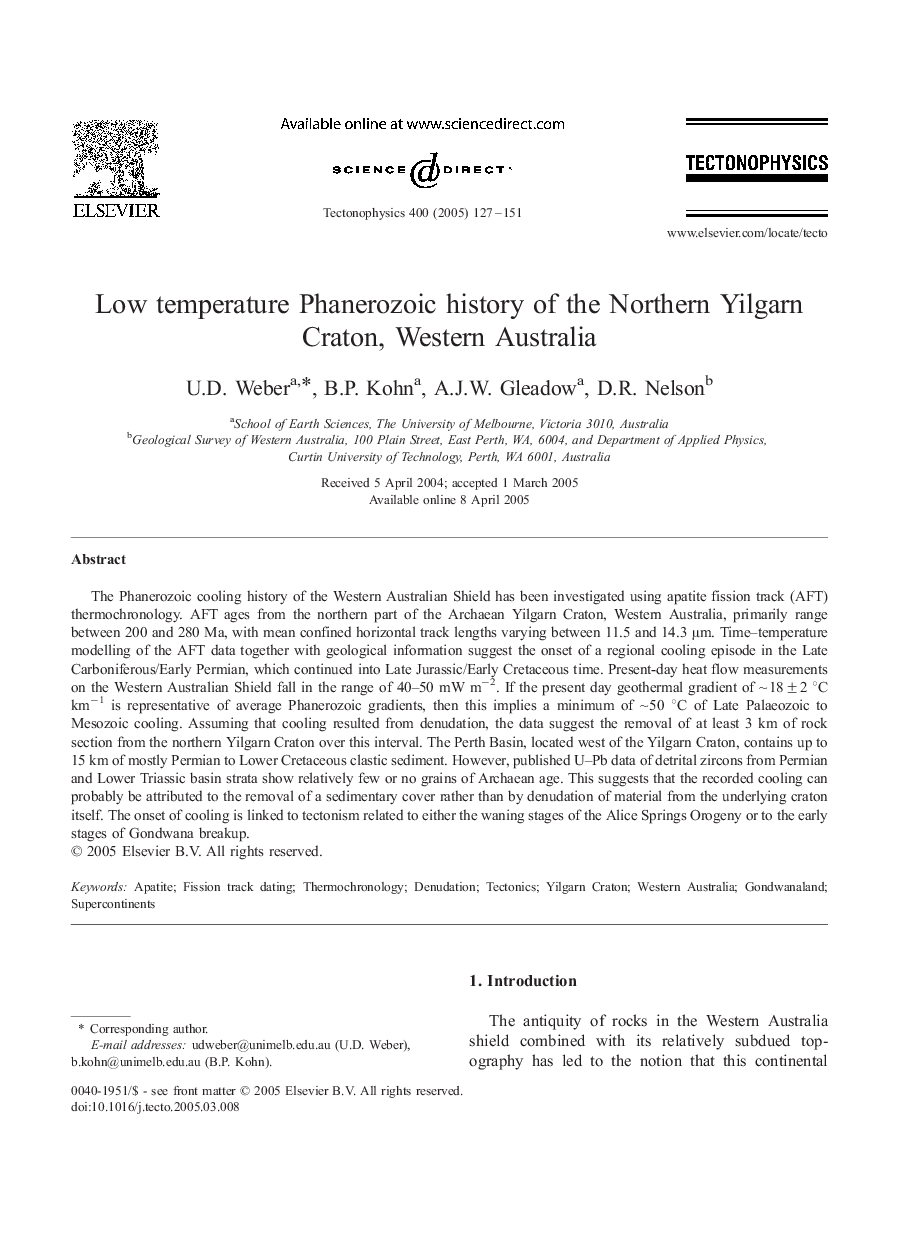| Article ID | Journal | Published Year | Pages | File Type |
|---|---|---|---|---|
| 9527046 | Tectonophysics | 2005 | 20 Pages |
Abstract
The Phanerozoic cooling history of the Western Australian Shield has been investigated using apatite fission track (AFT) thermochronology. AFT ages from the northern part of the Archaean Yilgarn Craton, Western Australia, primarily range between 200 and 280 Ma, with mean confined horizontal track lengths varying between 11.5 and 14.3 μm. Time-temperature modelling of the AFT data together with geological information suggest the onset of a regional cooling episode in the Late Carboniferous/Early Permian, which continued into Late Jurassic/Early Cretaceous time. Present-day heat flow measurements on the Western Australian Shield fall in the range of 40-50 mW mâ2. If the present day geothermal gradient of â¼Â 18 ± 2 °C kmâ1 is representative of average Phanerozoic gradients, then this implies a minimum of â¼Â 50 °C of Late Palaeozoic to Mesozoic cooling. Assuming that cooling resulted from denudation, the data suggest the removal of at least 3 km of rock section from the northern Yilgarn Craton over this interval. The Perth Basin, located west of the Yilgarn Craton, contains up to 15 km of mostly Permian to Lower Cretaceous clastic sediment. However, published U-Pb data of detrital zircons from Permian and Lower Triassic basin strata show relatively few or no grains of Archaean age. This suggests that the recorded cooling can probably be attributed to the removal of a sedimentary cover rather than by denudation of material from the underlying craton itself. The onset of cooling is linked to tectonism related to either the waning stages of the Alice Springs Orogeny or to the early stages of Gondwana breakup.
Keywords
Related Topics
Physical Sciences and Engineering
Earth and Planetary Sciences
Earth-Surface Processes
Authors
U.D. Weber, B.P. Kohn, A.J.W. Gleadow, D.R. Nelson,
